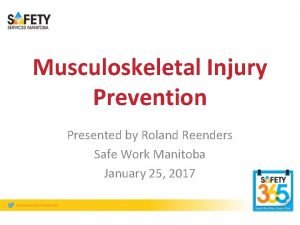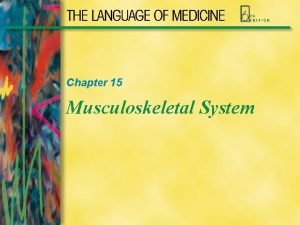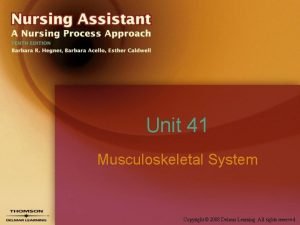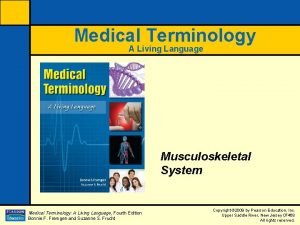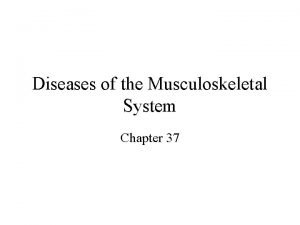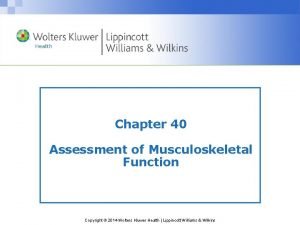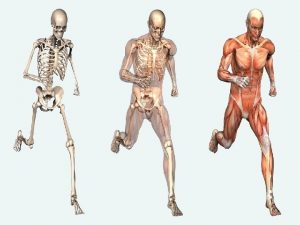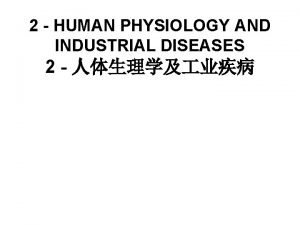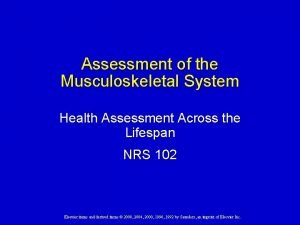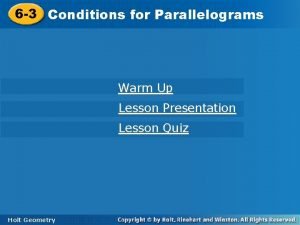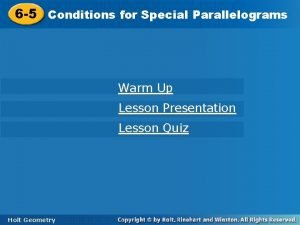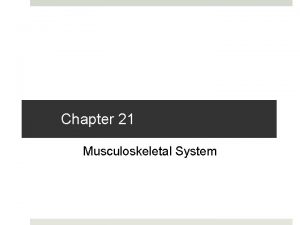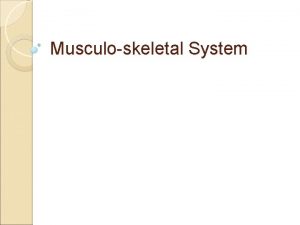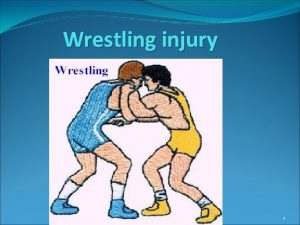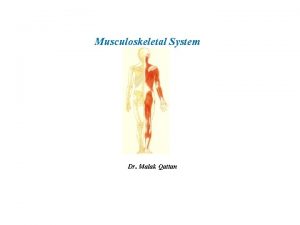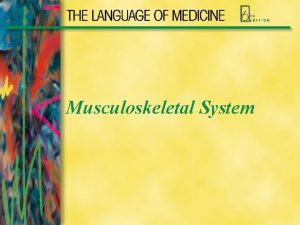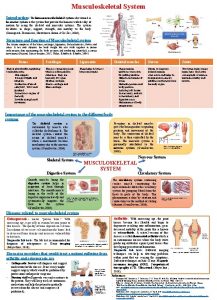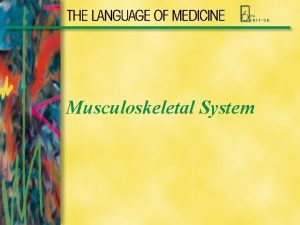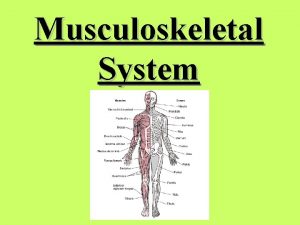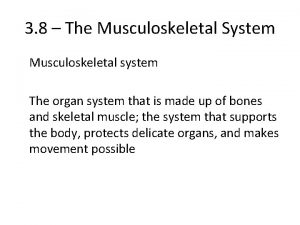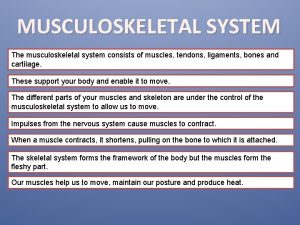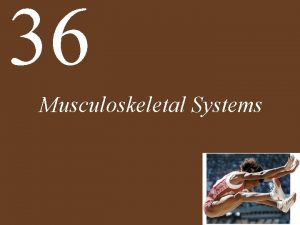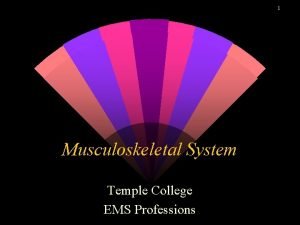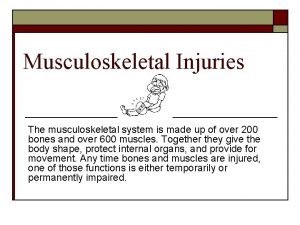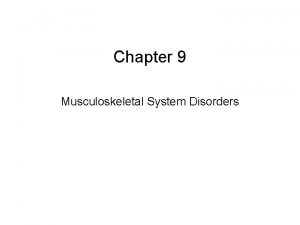MusculoSkeletal System Injury Key Facts Musculoskeletal conditions are





















- Slides: 21

Musculo-Skeletal System Injury Key Facts ü Musculoskeletal conditions are the leading contributor to disability worldwide, with low back pain being the single leading cause of disability globally. ü Musculoskeletal conditions and injuries are not just conditions of older age; they are prevalent across the life-course. Between one in three and one in five people(including children) live with a musculoskeletal pain condition. ü Musculoskeletal conditions significantly limit mobility and dexterity, leading to early retirement from work, reduced accumulated wealth and reduced ability to participate in social roles. 1

ü The greatest proportion of non-cancer persistent pain conditions is accounted for by musculoskeletal conditions. ü Highly prevalent among multi-morbidity health states, musculoskeletal conditions are prevalent in one third to one-half of multi-morbidity presentations, particularly in older people. ü Musculoskeletal conditions are commonly linked with depression and increase the risk of developing other chronic health conditions. 2

Musculo-skeletal System INJURY An Overview Of The Global Burden Of Injury Introduction: üInjuries have traditionally been regarded as random, unavoidable “accidents”. üToday both unintentional and intentional injuries are viewed as largely preventable events. üAcceptance of injuries as a preventable public health problem over the past decade has lead to the development of preventative strategies and, consequently, a decrease in the human death toll due to injuries 3

ü Injuries, unintentional or intentional, constitute a major public health problem, killing more than 5 million people worldwide each year and causing many more cases of disability. ü People from all economic groups suffer fatal injuries, but death rates due to injury tend to be higher in those in the lower income groups. ü The poor are also less likely to make a full recovery following an injury. 4

Definition • An injury is defined as "a bodily lesion at the organic level, resulting from acute exposure to energy (mechanical, thermal, electrical, chemical or radiant) in amounts that exceed the threshold of physiological tolerance. • In some cases (e. g. drowning, strangulation, freezing), the injury results from an insufficiency of a vital element”. 5

Causes Of Injuries: q 1. 2. 3. 4. 5. Abnormal energy transfer: Mechanical energy (moving objects) Thermal Electric Chemical Radiation Ø All injuries can be characterized from the perspective of an abnormal transfer of energy. Ø For example, the catastrophic injuries arising from the transfer of energy between the victim and a stationary object (the ground) or a moving object (another vehicle), which lead to trauma and possibly death. 6

Energy Forces And Injuries: • If the energy transfer is localized in one area, the likely outcome may be a penetrating injury. If the energy transfer is dispersed over a broad area, The result will often be a non-penetrating injury (blunt). • In situations involving thermal energy transfer, the result will be a burn. And so on, depending upon the mode of energy involved. q So injuries may be: 1. Blunt (compression) 2. Penetrating 3. Others: Ø Deceleration / Acceleration Ø Shear (shave or cut off) Ø Blast (explosion) Ø 7 Thermal / Chemical

Injuries Are Not Accidents: • Accidents: an unexpected occurrence happening by chance…. Implies a random and uncontrollable event. • Injuries: a definable correctable event with specific risks for occurrence…. implies something amenable to intervention. • Nearly all injuries are not the result of random events. • There are distinct patterns and circumstances that characterize their occurrence. • Injuries most often occur to certain risk groups and are fairly predictable (whether it be to certain persons, at certain times, or in common locations) 8

q. Example: road traffic injuries. 1. Driving under influence of alcohol 2. Speeding 3. Under-utilization of seat belts and child restraints 4. Poor road design and roadway environment 5. Unsafe vehicle design 6. Under-implementation of road safety standards 9

Types Of Injuries: There are several different types of injuries, though, which may occur from abnormal energy transfer. The two main injury categories: A. Unintentional injuries: Are subdivided into: 1. Road traffic injuries, poisoning, falls, fires, drowning 2. “Other unintentional injuries”: I. Exposure to animate and inanimate (non-living) mechanical forces (including firearms) Exposure to electric current, radiation and extreme ambient temperature and pressure, and to forces of nature; and contact with heat and hot substances, and venomous plants and animals. II. 10

B. Intentional injuries: are subdivided into: 1. 2. 3. 4. 11 Self-inflicted injuries (i. e. suicide), Interpersonal violence (e. g. homicide) War-related injuries “Other intentional injuries”. includes injuries due to legal intervention.

Injuries Of The Musculo-skeletal System: Ø Injuries occur in particular if the energy transfer (mechanical workload) is higher than the load-bearing capacity of the components of the musculo-skeletal system. Ø Injuries of muscles and tendons (e. g. strains, ruptures), ligaments (e. g. strains and ruptures) and bones (fractures, unnoticed micro-fractures and degenerative changes) are typical consequences. Ø In addition irritation of the insertion points of the muscles and tendons and of tendon sheaths as well as functional restrictions and degeneration of bones and cartilage (e. g. menisci, vertebrae, inter-vertebral discs and articulations) may occur. 12

Two Fundamental Types Of Musclu-skeletal Injuries: 1. Acute and painful injury: Caused by strong and shortterm energy transfer leading to sudden failure in structure and function e. g. : ü Tearing of a muscle due to a heavy lift. ü Fracture of a bone due to a fall. ü Blocking of a vertebral joint due to vigorous movement. 2. Chronic and persistent: results from a permanent overload or energy transfer leading to continuously increasing pain and dysfunction (e. g. wear and tear of ligaments, tendinitis, muscle spasm and hardening 13

BICEPS BRACHII ORIGIN Long head: supraglenoid tubercle of scapula. Short head: coracoid process of scapula with coracobrachialis INSERTION posterior border of bicipital tuberosity of radius (over bursa) and bicipital aponeurosis to deep fascia and subcutaneous ulna ACTION Supinates forearm, flexes elbow, weakly flexes shoulder NERVE Musculocutaneous nerve (C 5, 6) (from lateral cord) 14

Magnitude Of The Problem Of Injuries: • While mortality is an important indicator of the magnitude of a health problem, it is important to realize that for each injury death, there are several thousand injury survivors who are left with permanent disabling sequelae. • These non-fatal outcomes must also be measured in order to describe accurately the burden of disease due to injury. • The indicator used to quantify the loss of healthy life due to disease is the Disability-Adjusted Life Year or DALY, a measure that accounts not only for the years of life lost from premature death but also for the years of life lived with disability. 15

• One disability-adjusted life year (DALY) is defined as one lost year of healthy life, either due to premature death or disability. • Although DALYs include premature death, injury and physical disability, they do not, for example, account for: a. Mental health consequences of violence and war b. Conditions such as sexually transmitted diseases resulting from rape c. The effects of infectious diseases and malnutrition following war. 16

Global Injury Related Mortality ü An estimated 5 million people worldwide died from injuries in 2000 — a mortality rate of 83. 7 per 100 000 population. ü Injuries accounted for 9% of the world's deaths in 2000 and 12% of the world’s burden of disease. ü In the 2017 GBD study, musculoskeletal conditions were the highest contributor to global disability (accounting for 16% of all years lived with disability), and lower back pain remained the single leading cause of disability since it was first measured in 1990. ü While the prevalence of musculoskeletal conditions varies by age and diagnosis, between 20%– 33% of people across the globe live with a painful musculoskeletal condition. ü The burden of disease related to injuries, particularly road traffic injuries, interpersonal violence, war and self-inflicted injuries is expected to rise dramatically by the year 2020. ü Road traffic injuries are the leading cause of injuryrelated deaths worldwide 17

World rankings of injury-related mortality and burden of disease (DALYs lost), 1990 and 2020 The table shows that if current trends continue, road traffic and intentional injuries (i. e. self-inflicted injuries, interpersonal violence and war-related injuries) will rank among the 15 leading causes of death and burden of disease. 18

Injuries Mortality By Region: q More than 90% of the world's deaths from injuries occur in lowand middle-income countries. q The low- and middle-income countries of Europe have the highest injury mortality rates. q The South-East Asia and Western Pacific Regions account for the highest number of injury deaths worldwide. Injuries Mortality By Sex And Age Group q Globally, injury mortality among men is twice that among women. In some regions, however, mortality rates for suicide and burns in females are as high or even higher than in males. q Males in Africa and Europe have the highest injury-related mortality rates. 19

üYoung people between the ages of 15 and 44 years account for almost 50% of the world’s injury-related mortality. üMortality from road traffic injuries and interpersonal violence in males is almost 3 times higher than that in females. üChildren under 5 years of age account for approximately 25% of drowning deaths and a little over 15% of fire-related deaths worldwide. Distribution of global injury mortality by cause, 2000 20 One quarter of all injury deaths are due to road traffic injuries; suicides and interpersonal violence combined account for another quarter of the global total

Prevention and management Ø Musculoskeletal conditions share some similar risk factors to other noncommunicable diseases, such as inadequate physical activity, obesity, smoking and poor nutrition. Ø While management of some musculoskeletal conditions may require specialist and/or surgical care, many musculoskeletal conditions can be managed in primary care through a combination of core non-pharmacologic interventions such as exercise, weight management, psychological therapies and pharmacologic therapies. 21
 Insidan region jh
Insidan region jh Dorsopathies adalah
Dorsopathies adalah Thank you pictures for presentation
Thank you pictures for presentation Example of intentional injury
Example of intentional injury Chapter 21 the musculoskeletal system
Chapter 21 the musculoskeletal system Musculoskeletal system
Musculoskeletal system Chapter 6 musculoskeletal system
Chapter 6 musculoskeletal system Chapter 15 musculoskeletal system step by step
Chapter 15 musculoskeletal system step by step Unit 41 musculoskeletal system
Unit 41 musculoskeletal system Musculoskeletal system
Musculoskeletal system Musculoskeletal system medical terminology
Musculoskeletal system medical terminology Diseases of the musculoskeletal system
Diseases of the musculoskeletal system Assessment of the musculoskeletal system
Assessment of the musculoskeletal system Assessment of the musculoskeletal system
Assessment of the musculoskeletal system Musculoskeletal system
Musculoskeletal system Objective data for musculoskeletal system
Objective data for musculoskeletal system Business model canvas example
Business model canvas example Contoh bisnis model canvas makanan pdf
Contoh bisnis model canvas makanan pdf 6.5 conditions for special parallelograms worksheet answers
6.5 conditions for special parallelograms worksheet answers 6-3 lesson quiz
6-3 lesson quiz 6-5 conditions for special parallelograms answer key
6-5 conditions for special parallelograms answer key 64:8+9:9-63:7
64:8+9:9-63:7


